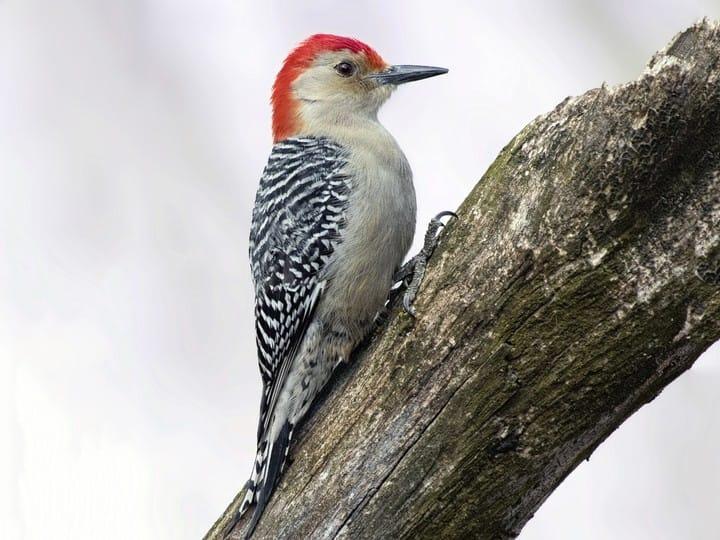Woodpeckers Unleashed: Checking Out the Marvels of These Experienced Tree Mountain Climbers
Woodpeckers, with their distinct markings and rhythmic drumming resembling with wooded locations, hold a special place in the avian globe. Their specialized composition and adaptations allow them to navigate upright surfaces with unparalleled ability. However, their proficiency of tree climbing is simply one element of their fascinating habits. As we dig into the detailed details of woodpeckers' nesting behaviors, feeding strategies, and the continuous preservation efforts to protect these impressive birds, a deeper appreciation for their location in nature unfolds.
Makeup and Adaptations
When analyzing the anatomy and adaptations of woodpeckers, one can observe exceptional features that enable these birds to flourish in their specialized environmental specific niche. Furthermore, woodpeckers have zygodactyl feet, with 2 toes dealing with forward and two facing backward, providing a firm grasp on tree trunks while they search for food or drum for interaction.
Moreover, woodpeckers have an one-of-a-kind tongue framework that is long, barbed, and sticky, enabling them to draw out bugs from gaps in wood. This specialized adjustment enables woodpeckers to exploit a food resource that is unattainable to many various other bird types. In general, the makeup and adjustments of woodpeckers showcase the impressive transformative solutions that have actually allowed these birds to thrive in their arboreal environment.
Drumming Behavior
Having actually explored the makeup and adaptations of woodpeckers, the emphasis now changes to recognizing their drumming actions, an unique facet of their interaction and territorial screens. Drumming is an important form of communication among woodpeckers, offering numerous objectives such as developing territories, attracting friends, and signaling alarm system. Each woodpecker varieties has a special drumming pattern that helps people acknowledge participants of their own types and identify them from competitors or killers.
Woodpeckers create drumming audios by quickly pecking on resonant surface areas such as dead trees, utility poles, or even steel objects, developing a collection of rhythmic beats. The intensity and rate of drumming can vary based upon the purpose; for example, a quick drumming sequence may signify hostility towards trespassers, while a slower and softer drumming pattern can suggest courtship (Woodpeckers in Florida). In addition, woodpeckers might adjust the regularity and duration of their drumming to communicate details messages effectively
Nesting Routines
Exploring the nesting routines of woodpeckers discloses fascinating insights right into their reproductive behaviors and habitat options. Woodpeckers are known for their distinct nesting preferences, usually excavating dental caries in trees to produce protected rooms for elevating their young. These dental caries offer not just as a nesting website yet additionally as a secure refuge from predators and harsh weather condition.
Woodpeckers display a high level of fidelity to their nesting sites, typically returning article source to the exact same location year after year. This behavior highlights the significance of suitable habitat availability for their reproductive success. The option of a nesting website is vital for woodpeckers, with aspects such as tree types, height, and decay stage playing substantial duties in their decision-making try this web-site procedure.
Remarkably, some woodpecker species are recognized to dig deep into several tooth cavities within their region, offering themselves with different nesting options. This approach may offer as a type of insurance coverage against potential threats or disturbances to their key nesting website.

Feeding Techniques
One of the most distinct feeding actions of woodpeckers is drumming, which includes fast pecking on trees to uncover insects beneath the bark. Woodpeckers are additionally recognized to excavate cavities in trees to access surprise insect larvae or sap. Some types, like the acorn woodpecker, shop nuts in specially created openings called granaries.
Preservation Initiatives
Amidst the complex feeding techniques showed by woodpeckers, the conservation efforts focused on securing these fascinating birds play a critical function in protecting their environments and populaces. Woodpeckers face numerous dangers to their survival, including environment loss because of deforestation, environment change modifying their environments, and collisions with synthetic structures such as structures and automobiles - Woodpeckers in Florida. Conservationists are proactively working to resolve these difficulties and ensure the long-lasting well-being of woodpecker types

Education and learning and public understanding projects are likewise important components of woodpecker preservation efforts. By raising recognition concerning the value of these birds in maintaining healthy and balanced forest communities, preservationists can gather support for environment conservation campaigns and promote liable land administration practices. With collaborative initiatives between scientists, policymakers, and local neighborhoods, we can work with each other to secure a future where woodpeckers grow in their natural environments.
Final Thought
